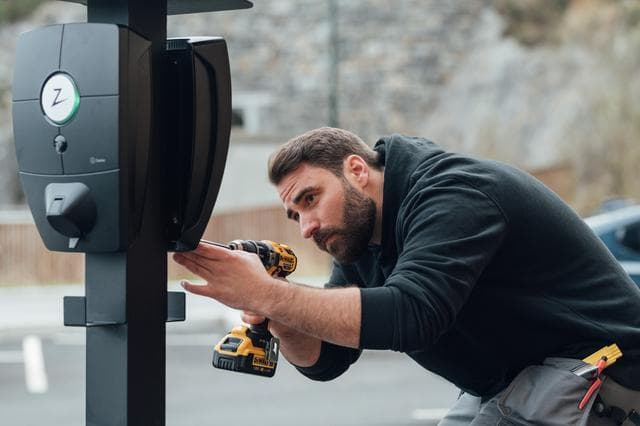Zaptec uses 66 per cent less available power than other systems. Don’t fix the charging point to one set phase - let Zaptec switch it automatically

How should you dimension a Zaptec EV charging system?
In a perfect world, everyone would have access to 22 kW in each and every car park, and unlimited charging would be no problem. Unfortunately, this is not the case in most circumstances, leaving us – in most cases – to utilise the available capacity as best as possible. If there is 63 A available for 100 vehicles, then we have to use what is available – setting up each individual circuit so that everyone should be able to charge their vehicles during the course of the night. It is up to the customer how much current they want to make available, and if a customer wants all charging points to be able to guarantee some current simultaneously then it is the electrician’s responsibility to ensure that each charging point has a minimum of 6 A available at all times. This is why we recommend that your infrastructure is ‘overdimensioned’ in relation to the available output (if the input is limited) and that you let ZapCloud manage how much current is available at any given time.
The charging system’s top circuit in ZapCloud can be set in different ways:
Physically installed fuse value for the entire charging system.
Fictitious figures to limit the maximum simultaneous power output.
Time-controlled power management, e.g. 40 A from 07:00 until 09:00 and 63 A the rest of the time.
Automatically based on the building’s power consumption through the use of Zaptec APM.
Zaptec can perform load balancing on several levels. This is why we always recommend that the physical infrastructure is prepared for a higher power consumption than is available at the point of installation. Regardless, ZapCloud will balance to ensure that the combined total of all circuits will never exceed a fictitious ‘top circuit’. If you carry out an installation using a four-wire circuit, you should use a five-wire installation cable in case a transformer is installed at a later date to provide enhanced charging performance. This will mean that the neutral connection can be made in the fuse box rather than on each individual charging point, which makes it easier to carry out future upgrades.
The following setup will deliver 6 A simultaneously:
230 V 3-phase: 18 charging points at 63 A
400 V 3-phase: 30 charging points at 63 A
What does this mean for users?
In our experience, Zaptec needs 66 per cent less available power than other systems due to the way in which we use phases. Instead of locking our charging points to one set phase, Zaptec switches vehicles automatically to the phase with the least load. Since charging vehicles is not predictable, this approach offers significant advantages. Residents park their cars at different times and it is impossible to tell where in the parking facility the next vehicle will be parked. So, by pushing the envelope you can say that each vehicle needs an average of 2 A in order to charge satisfactorily. The worst that can happen in this case is that one third of vehicles charge at 6 A simultaneously while the rest are waiting in the queue. The cars in the queue will also be fully charged before it is time to leave for work in the morning. Not every car needs to be fully charged before midnight given that they will very probably remain plugged in until 07.00.
Offline balancing
If the charging system loses its Internet connect due to ISP issues, the charging system always retain a defined profile of the best possible distribution of the power that was available. This is comparable with static fixed capacity. In a 63 A 400 V charging system with nine vehicles, each charging point will be evenly distributed across each phase, and it can draw up to 20 A (4.6 kW). As soon as the charging system is back online, it will resume load balancing in real-time and will upload the charging point’s full usage history for the period while it was offline.